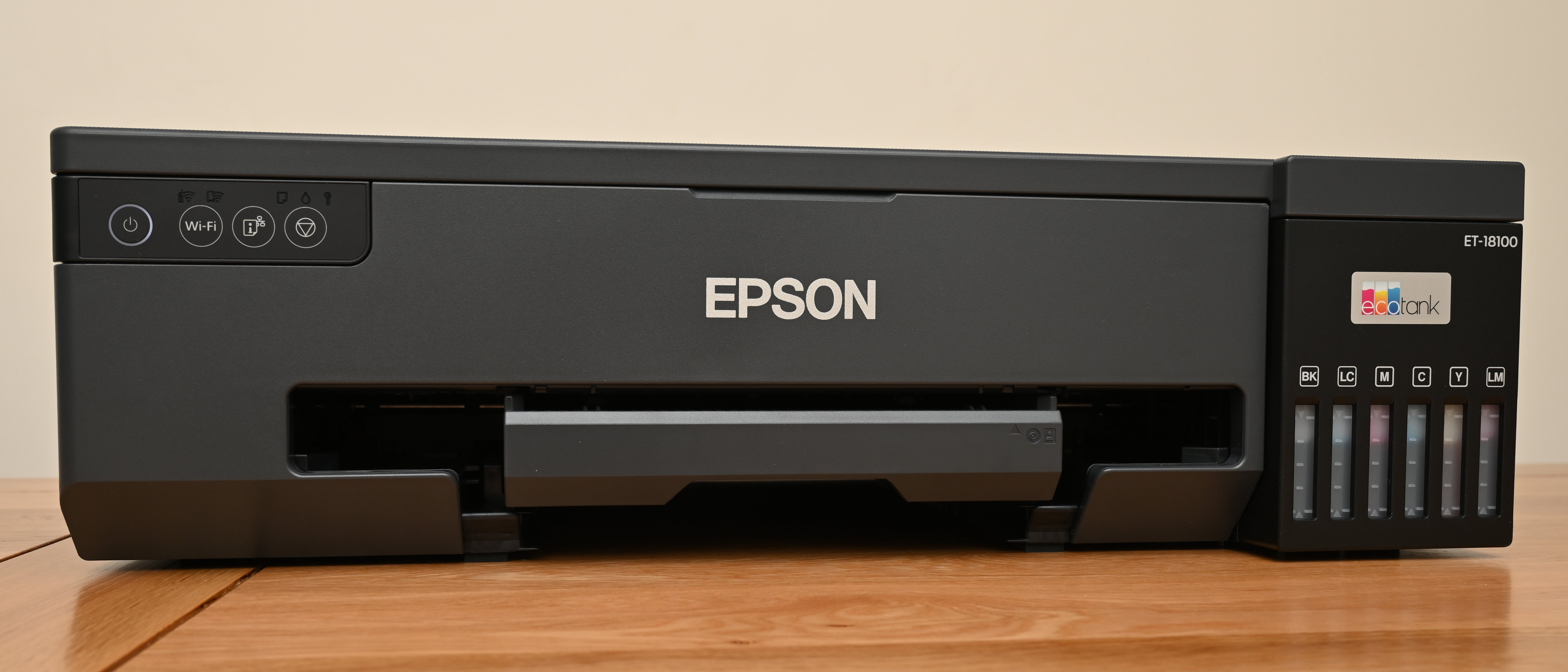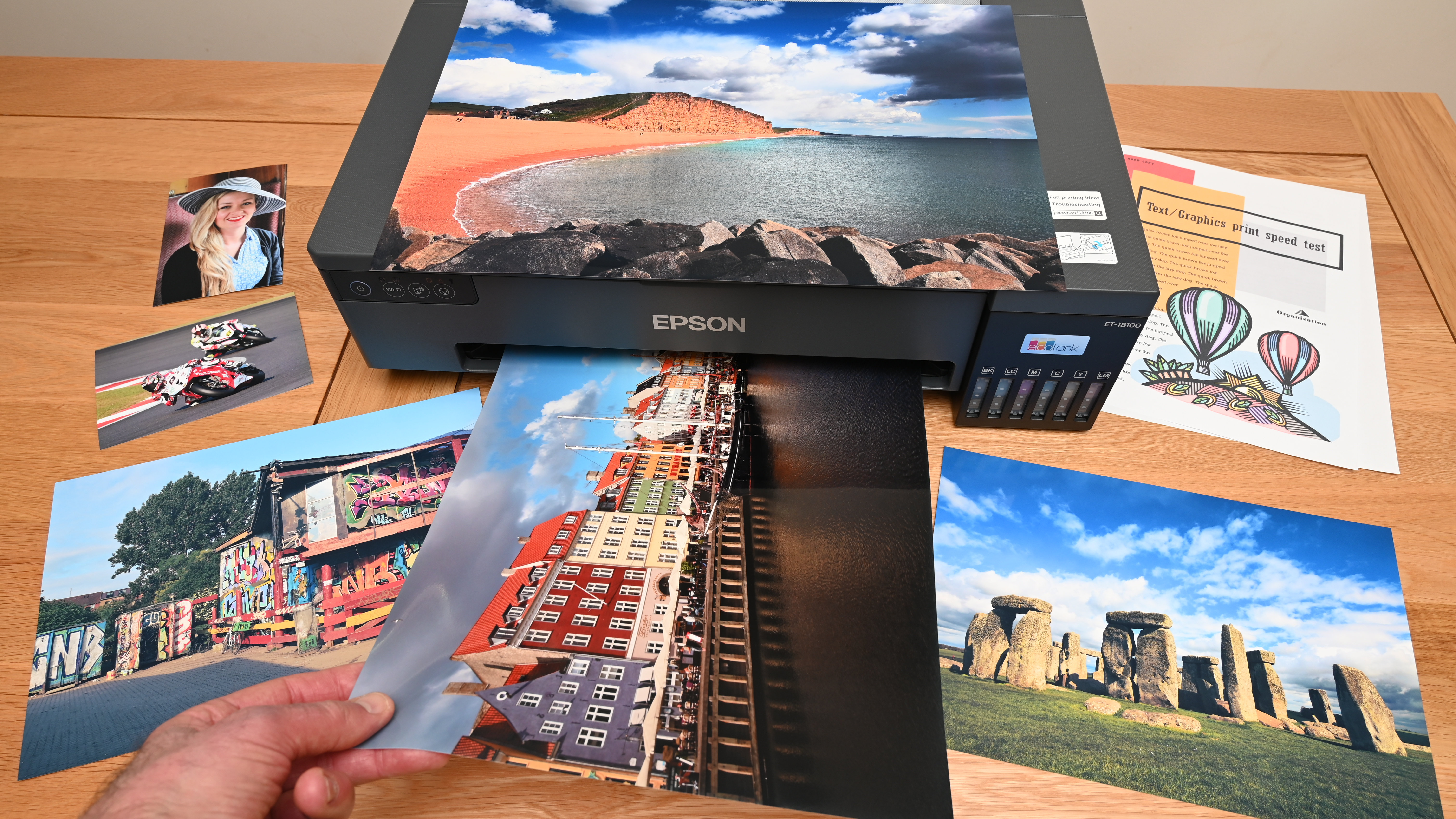
I’m partial to big photo prints. Sure, A4 prints look great close-up but hang them on the wall and they look a little lost and unimposing. A3 is the next step up but A3+ is even better, with a page size of 13x19 inches. There are quite a few A3+ printers on the market, including the likes of the Canon Pixma PRO-200 dye-based printer and the Canon imagePROGRAF PRO-300 pigment-based printer. These are properly pro-grade machines to suit photographers who sell prints for a living, with sets of 8 or 10 cartridges respectively for an epic color space and a spectacular tonal range. Epson’s own SureColor SC-P700 pigment-based cartridge printer falls into the same category. But there’s that word, ‘cartridges’. The need to frequently replace cartridges in these printers can work out very expensive, as well as being a time-wasting chore. The Epson ET-18100 is an ‘EcoTank’ printer that’s based on relatively large tanks of ink, replenished by bottles that are very much cheaper to buy. It sets out to be one of the best Epson printers, in a line-up that includes some of the best inkjet printers, the best portable printers, and the best photo printers.
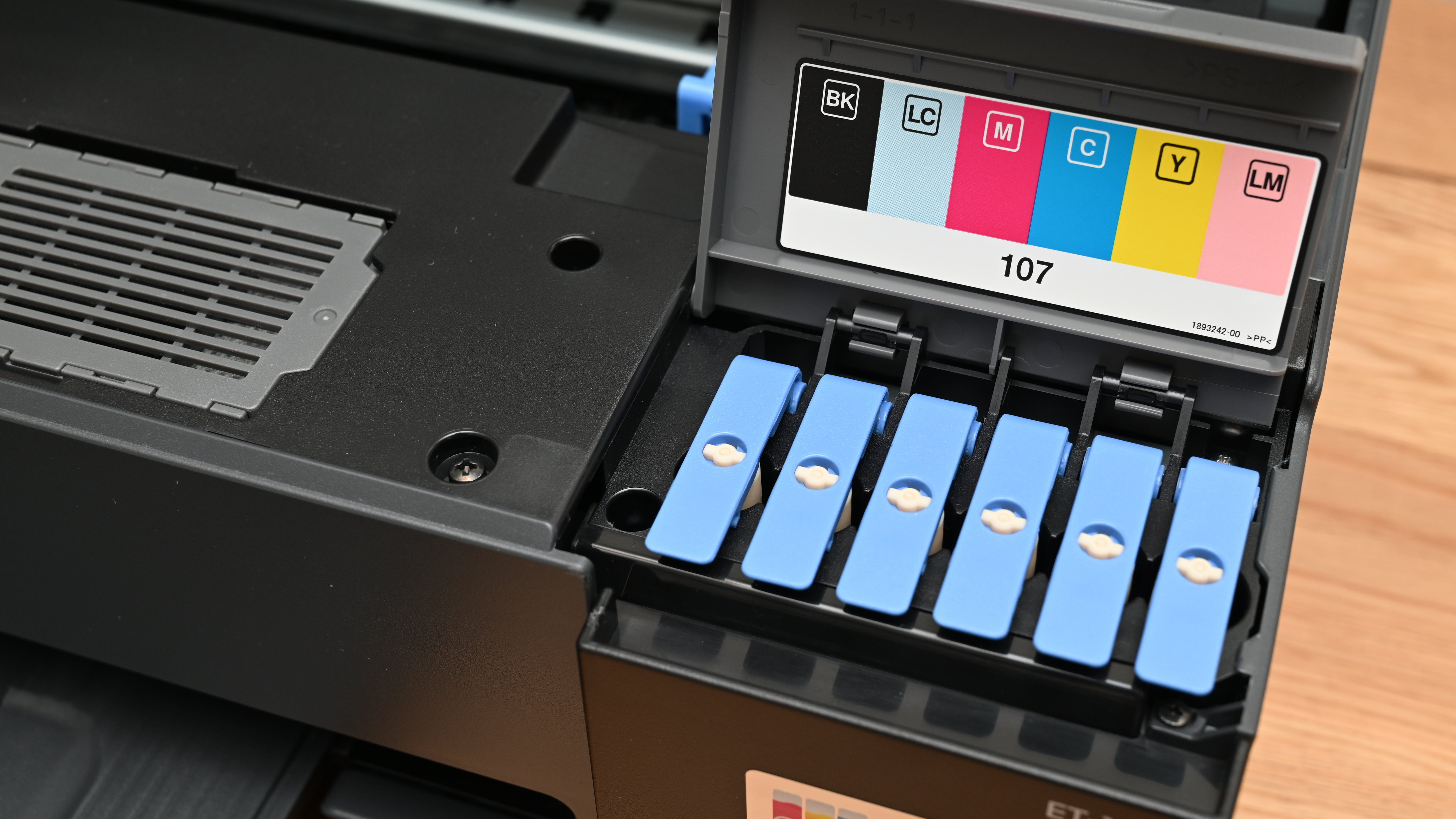
Epson EcoTank ET-18100: Specifications
Epson EcoTank ET-18100: Price
Availability is a sore point for the ET-18100. I live in the UK where it’s been on sale since March 2023. Two years down the line and counting, it’s never been available in the USA nor in Australia and various other world regions. I’m sure Epson must have a reason for this but I’m at a complete loss to fathom what it is. Long story short, it sells in the UK for around £699. That makes it about 50 per cent more expensive than the Canon Pixma PRO-200 and more than twice the price of the Epson Expression Photo HD XP-15000. However, the purchase price of any printer is only the start of a very long story. With ink costs that are only about a tenth or less of the price of cartridge-based printers, the ET-18100 can potentially pay for itself sooner rather than later, with a much lower total cost of ownership.
Epson EcoTank ET-18100: Design & Handling
High-end A3+ photo printers tend to come with weighty price tags and a heavyweight build. The two Canon models that I mentioned above both weigh more than 14kg. The ET-18100 is a comparatively lightweight affair, tipping the scales at just 8kg. It’s also refreshingly compact and easy to find room for, measuring a mere 523x369x150mm. It certainly looks neat and tidy, but there are precious few extras.
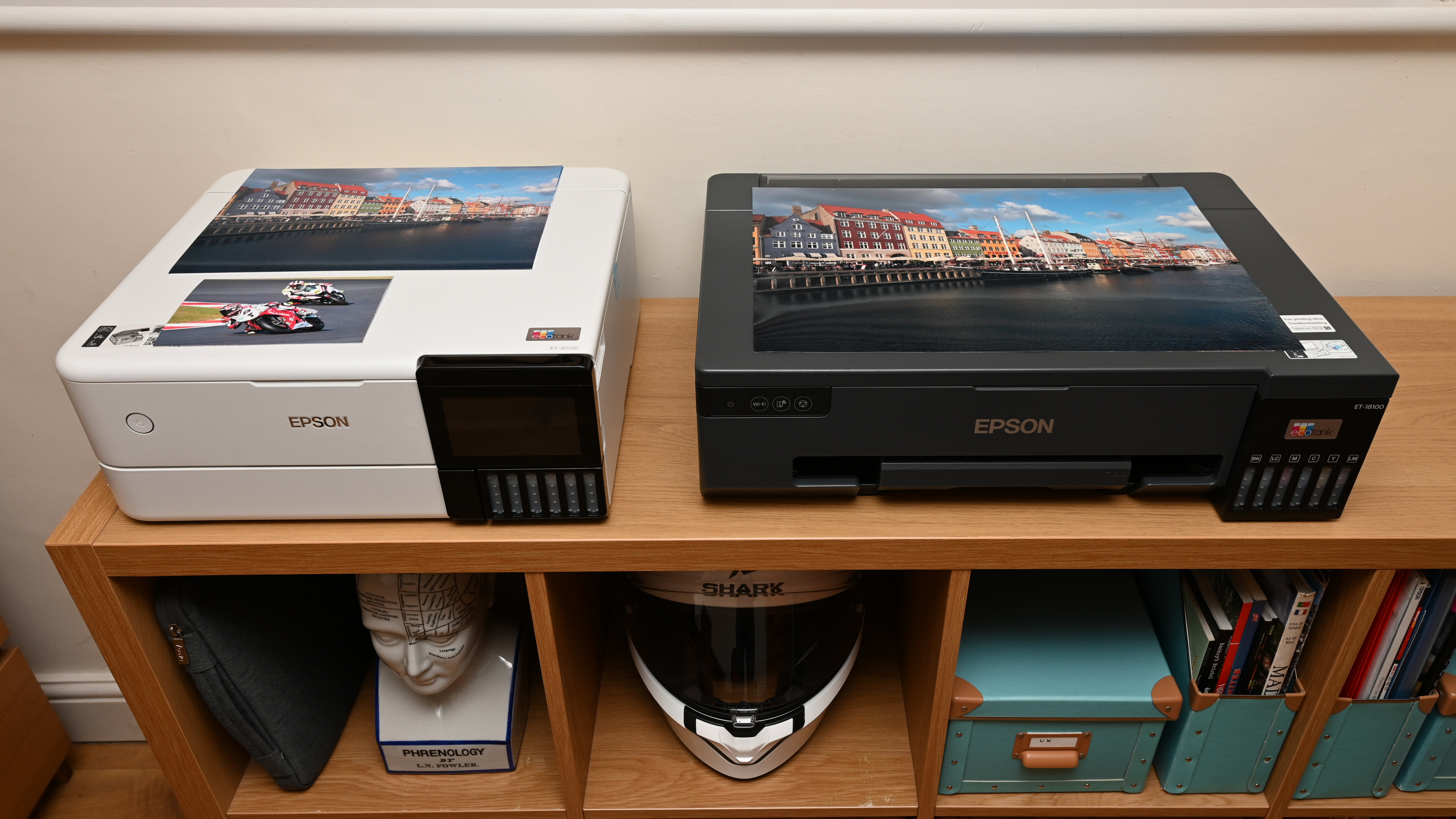
The front panel has four pushbutton controls at the top right, but that’s your lot. There’s no nice color touchscreen, nor any info screen at all. There’s also no built-in scanner, which would have come in handy for copying as well as scanning.
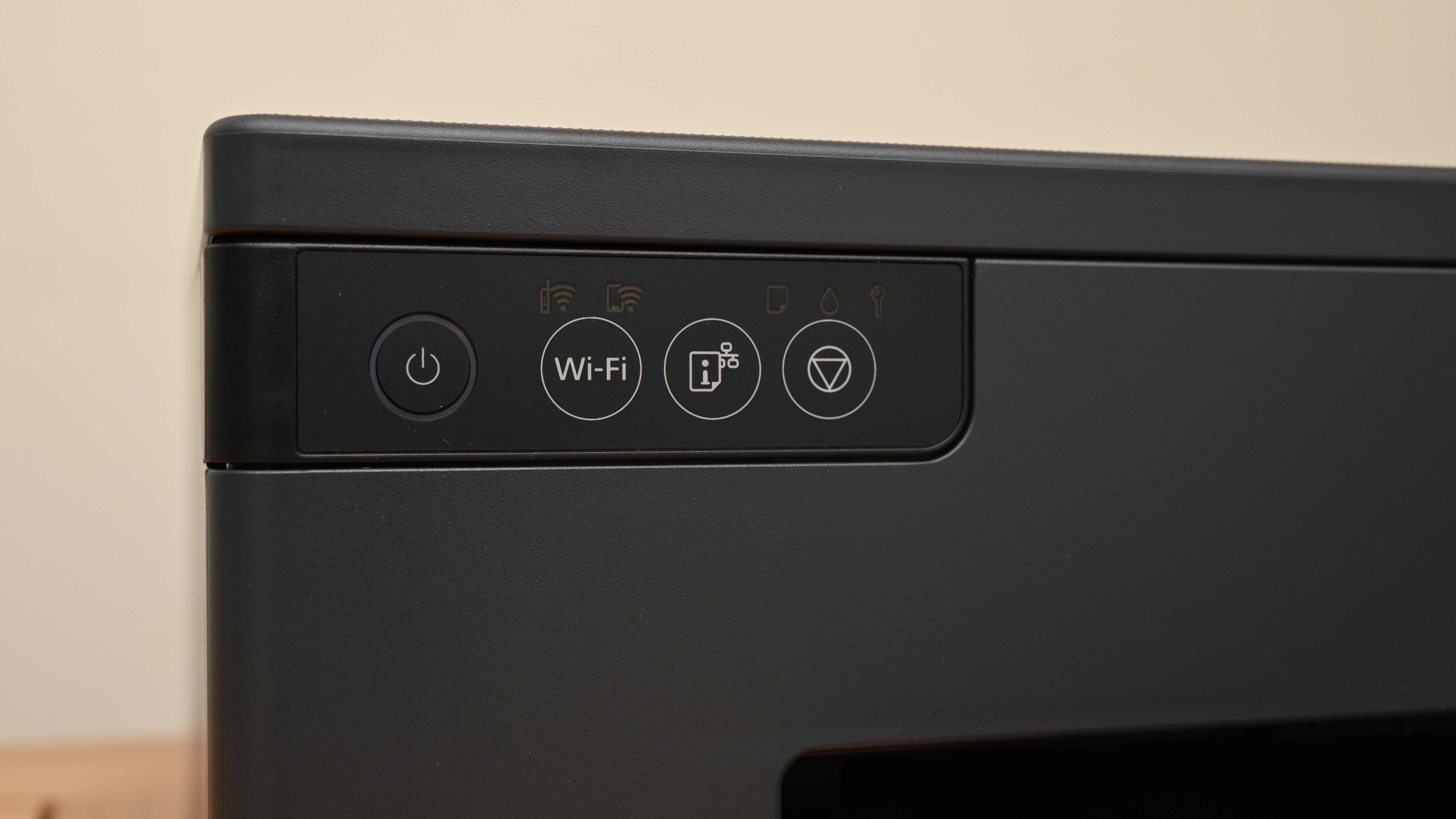
The output tray is a push-pull affair, rather than being motorized, there’s only one single paper feed and no auto duplex unit. For comparison, various top-end large-format photo printers some of these kinds of extras, but they’re featured on various other Epson A3+ printers, including the Epson EcoTank ET-8550. In fairness though, the ET-8550 is designed as a multi-purpose document/photo printer rather than majoring on photo printing, and like the ET-8550, the ET-18100 does at least include a tray for printing on white-faced CDs and DVDs (if anyone actually does that anymore).
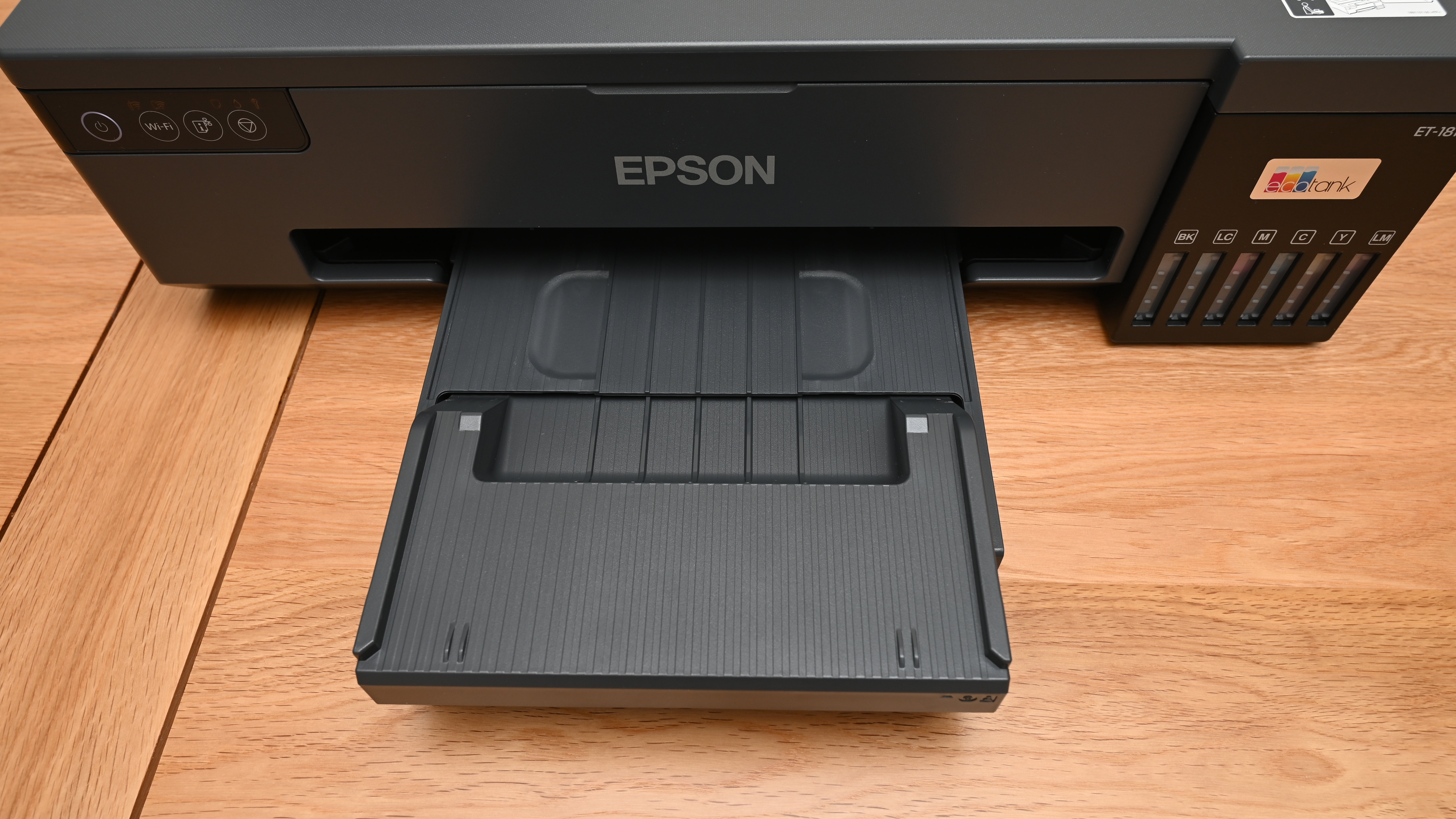
Personally, I’d like to have seen more than one paper input tray, even if it’s just for stashing plain paper inside the printer for general document printing. Another problem is that, without a flat paper path via a slot in the rear (again, as featured in the ET-8550) the maximum weight of paper you can use is 300gsm. That’s sufficient for most photo paper stock, but inadequate for various varieties of fine art paper, and for thicker card and board media.
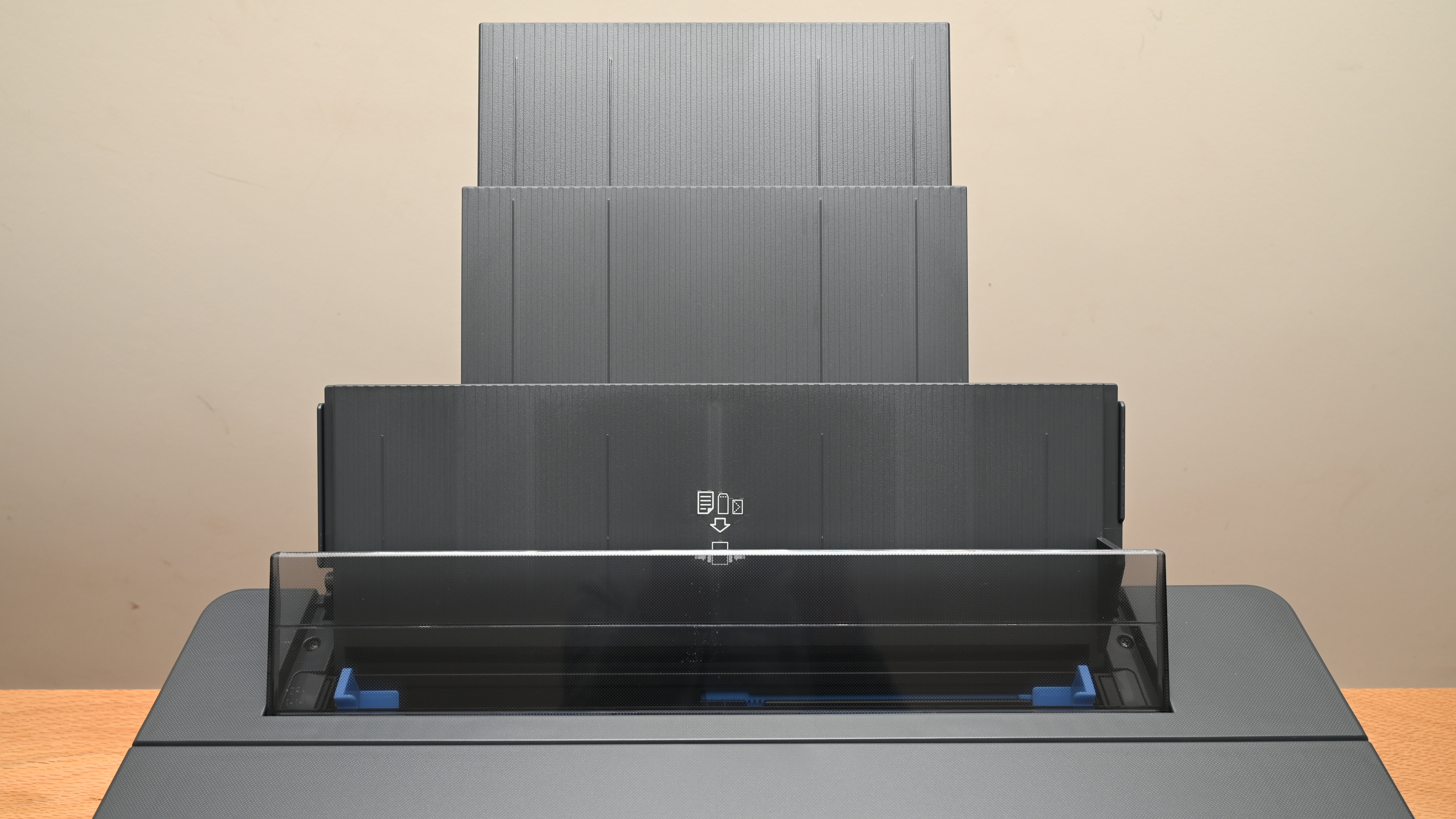
Adding to the printer’s photographic credentials, it runs on a classic line-up of cyan, magenta, yellow and black inks, plus light cyan and light magenta. It’s a very conventional six-ink set that’s been used for decades. The main upside is that it enables a wide color space (or gamut) and delivers a high level of photo fidelity and realism. At least, that’s the case for color photo printing. The ink set is less well suited to black & white photo printing, for which top-ranking photo printers generally include multiple black and grey cartridges, to enhance the tonal range and monochrome neutrality.
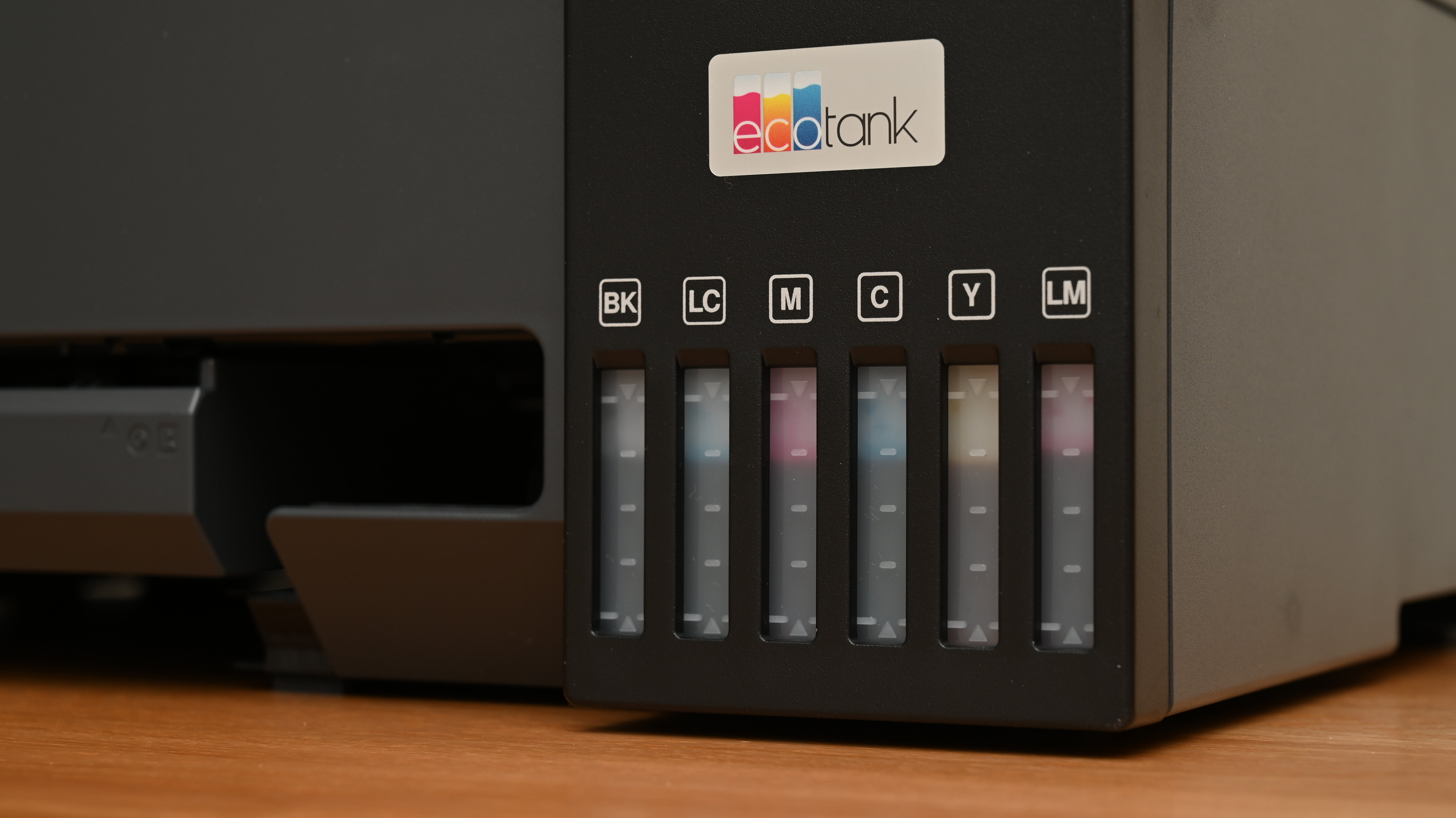
Epson states that a complete set of ink bottles should be enough for up to 2,100 color photos. Considering they’re 70cl bottles and priced at £10 each, that equates to 14p per milliliter in the UK. That’s amazingly cheap, even for a bottled ink system. By comparison, cartridge-based inks for the Epson Expression Photo HD XP-15000 cost around £2.23 per milliliter, which is about 16 times as expensive. The bottom line is that the cost of ink for a 6x4-inch photo averages out to around 2.9p. Naturally, you have to add the price of photo paper but even so, that’s amazingly good value.
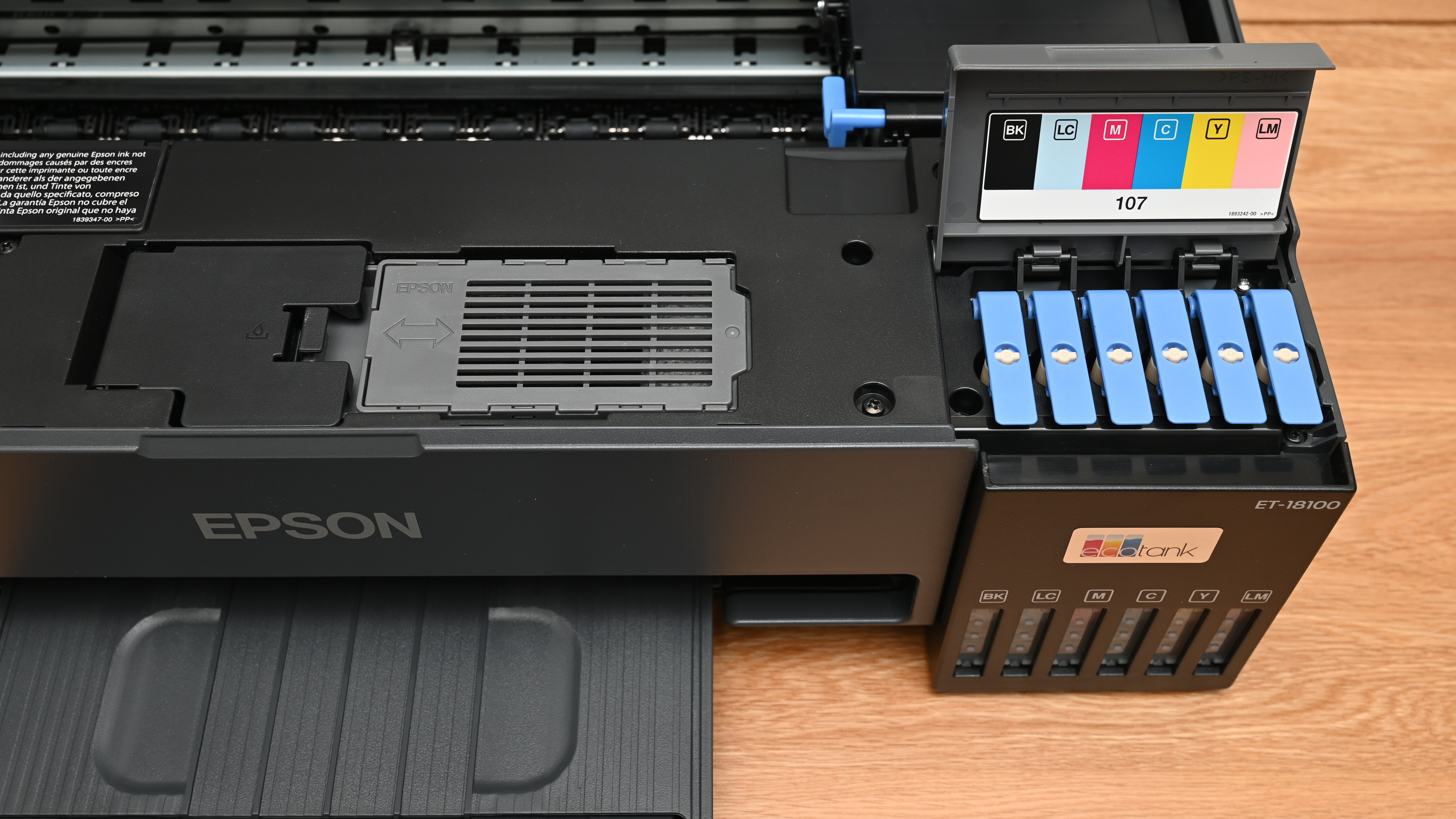
There’s no PictBridge port nor a memory card slot for direct, standalone printing. And as I’ve said, there are no onboard controls nor a display screen for standalone printing either. On the plus side, the computer-based printer driver is intuitive and straightforward. The following gallery includes images of the driver’s three main screens, namely Main, More Options and Maintenance.
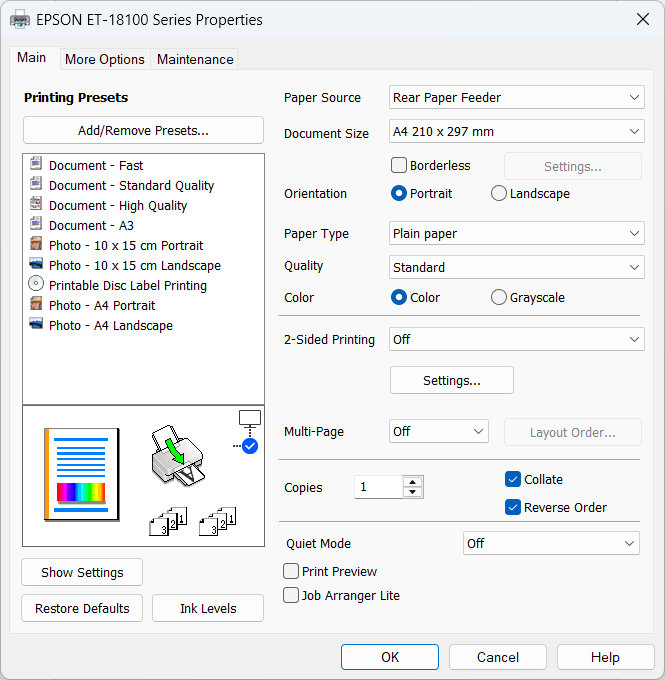
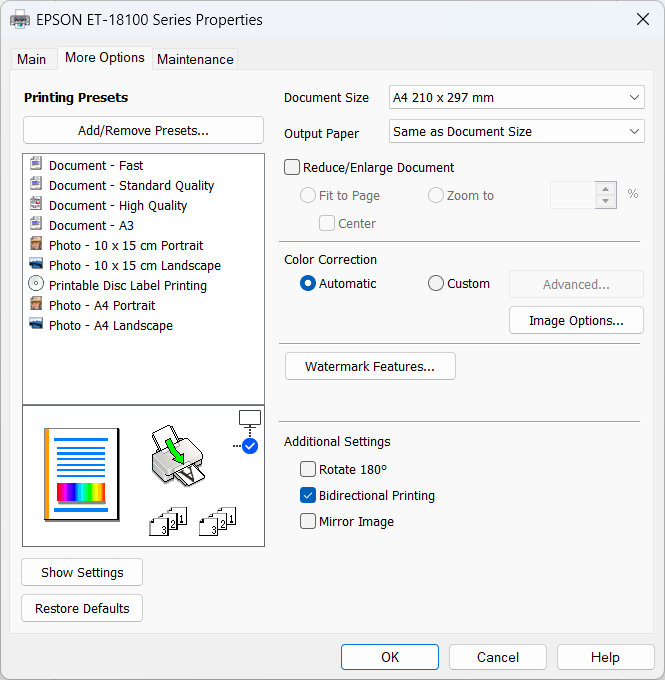
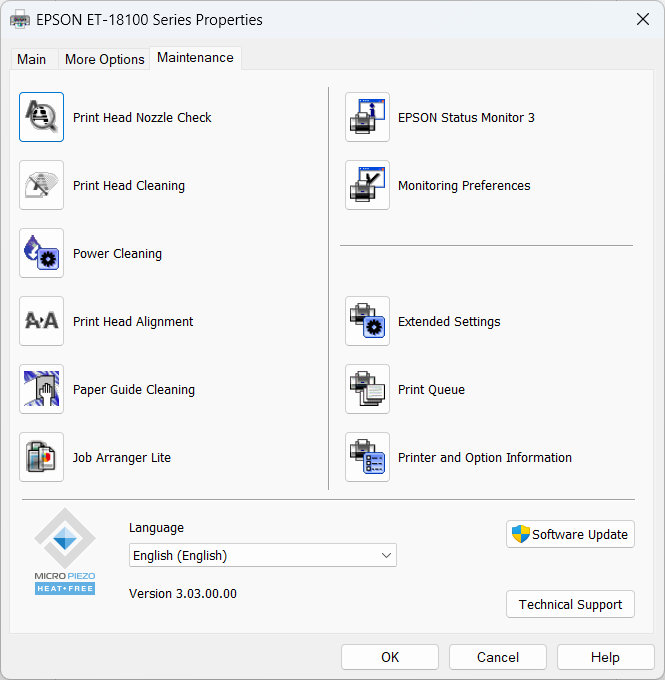
Epson EcoTank ET-18100: Performance
Print speeds are swift in standard quality modes. In my tests, the ET-18100 took just 7 seconds to output an A4 mono text page and 8 seconds for a mixed text and graphicsex color A4 page. Switching to the main event of photo printing, I created borderless prints on glossy paper in standard photo quality mode of 6x4-inch in 25 seconds, A4 in 1m 03s and A3 in 1m 51s. That’s again impressively quick but, swapping to high print quality mode, borderless photo prints slowed down to 1m 05s for 6x4-inch, 2m 59s for A4 and 5m 06s for A3. Any actual differences in print quality on glossy photo paper are generally almost imperceptible, making ‘standard’ quality the preferred option if you’ve got a lot of printing to do in a hurry.
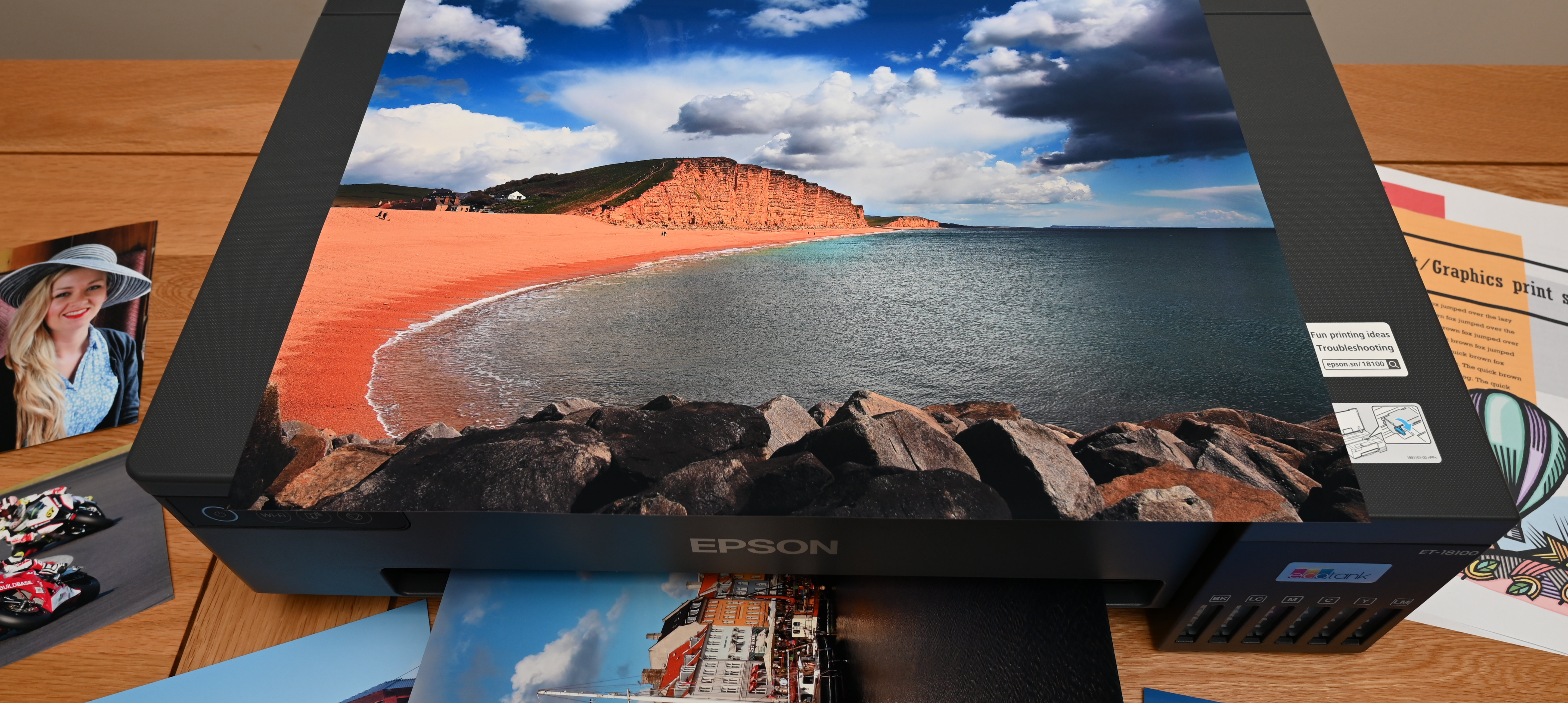
Print quality for color photos is actually very satisfying. Color rendition is vibrant but very natural. Whereas the ET-8550 only uses five dye-based inks for photo printing, and lacks a light cyan and light magenta, the ET-18100 has a relatively generous overall color space. More surprisingly, it also delivers much more depth, density and detail in dark tones and shadows than the ET-8550. For example, landscape photos with brooding dark skies tend to look much more dramatic when printed on the ET-18100 compared with the ET-8500.
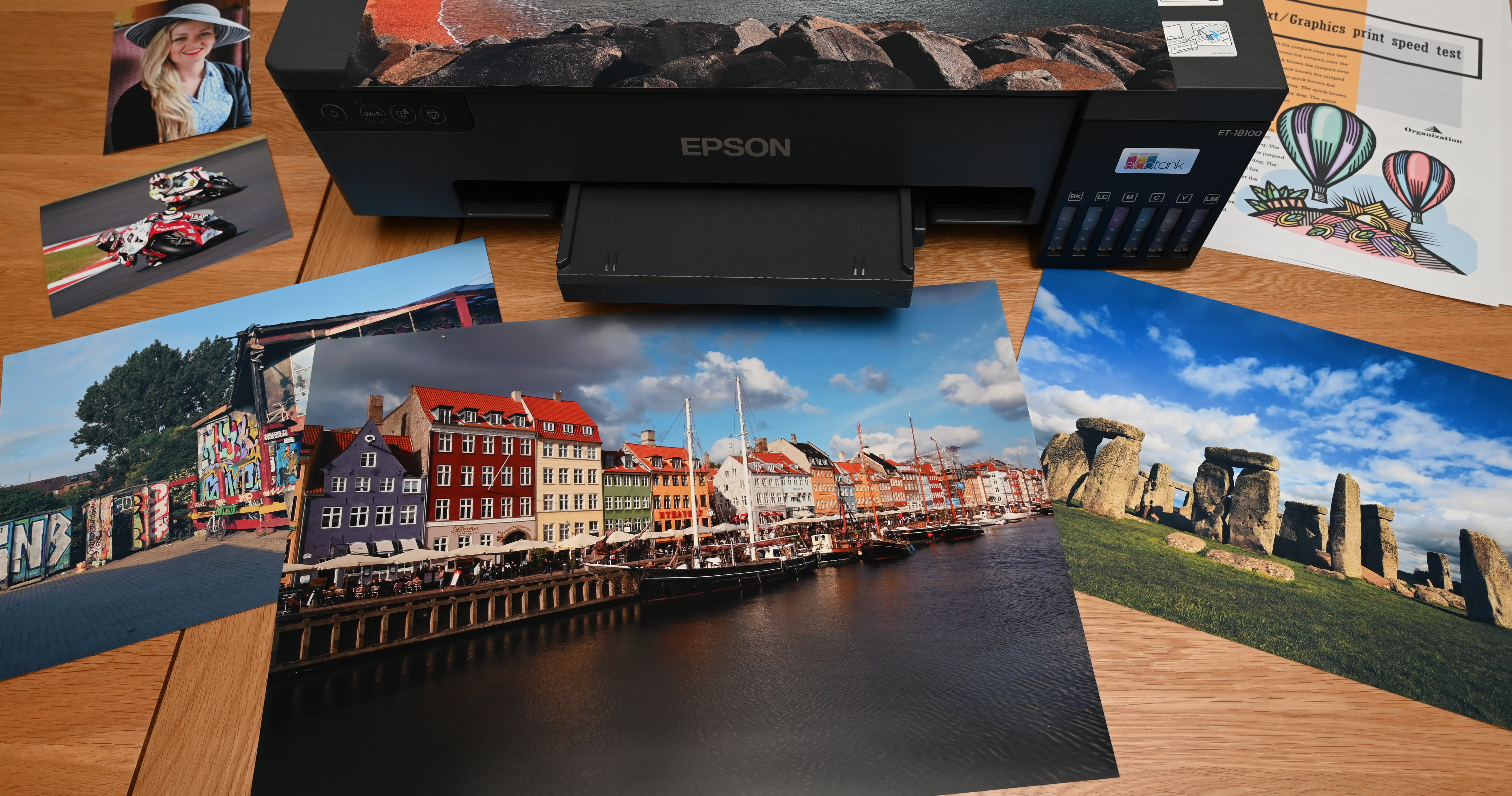
As a dye-based printer, the ET-18100 is best suited to glossy and luster photo papers, with which the ink is fully absorbed beneath the shiny and protective top layer of the paper. Results also look very passable on matte photo papers but, as I’ve mentioned, the maximum compatible paper thickness can cause problems with some fine art media, and there’s no possibility of printing on thick card or board.
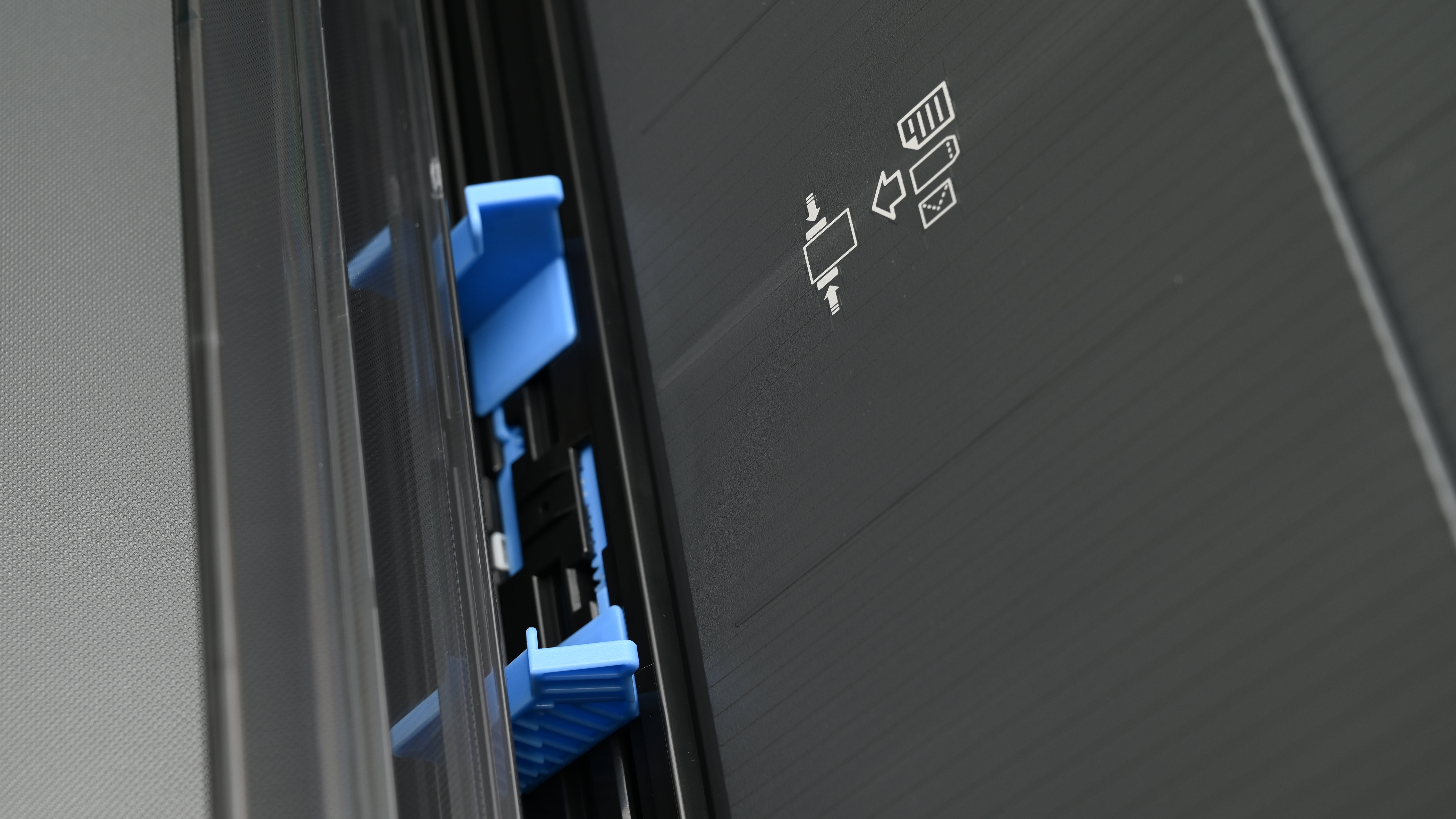
Epson EcoTank ET-18100: Verdict
Like many people, I prefer to give house room to just one printer, rather than buying and running two printers – one for documents and the other for photos. The ET-18100 is primarily a large-format photo printer but makes decent quality mono and color documents. The only niggle is that, with just one paper feed at the back and no internal paper cassette, you have to keep chopping and changing between the loaded paper every time you want to switch between printing documents and photos. The lack of a display screen and the fact that there’s no built-in scanner also limits versatility as a household printer. On the plus side, the rock-bottom running costs make the ET-18100 a great choice if you want to print a lot of photos in a variety of sizes, from super-small right up to A3+/13x19-inch.
